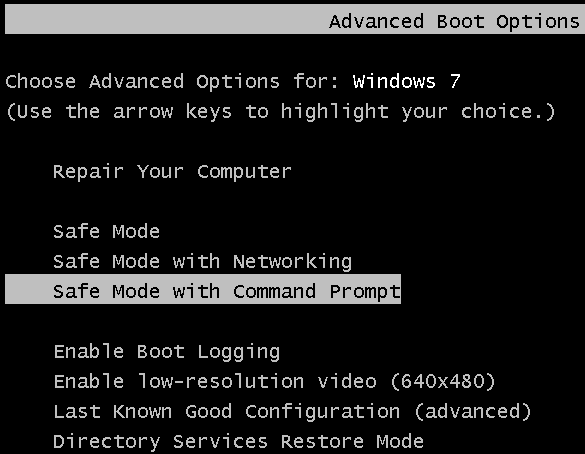

The key you need to press will be clearly described on the first screen you see while your computer boots up.
 On the very first screen, you see while the computer boots up, press the respective key on your keyboard to get into your computer’s BIOS or Setup. Once you’re ready to go ahead with the installation, insert the Windows 7 installation DVD or USB you created into your computer and restart it. Reinstalling Windows 7 will permanently delete any data stored on your computer (at least on the same partition of your computer’s hard drive that you’ll be installing Windows 7 on), so be sure to back up any files and data you don’t want to lose.
On the very first screen, you see while the computer boots up, press the respective key on your keyboard to get into your computer’s BIOS or Setup. Once you’re ready to go ahead with the installation, insert the Windows 7 installation DVD or USB you created into your computer and restart it. Reinstalling Windows 7 will permanently delete any data stored on your computer (at least on the same partition of your computer’s hard drive that you’ll be installing Windows 7 on), so be sure to back up any files and data you don’t want to lose. 
Create a bootable Windows 7 installation medium. If you don’t have a Windows 7 installation disc, however, you can simply create a Windows 7 installation DVD or USB that you can boot your computer from use to reinstall Windows 7. Obviously, you can’t install Windows 7 on a computer unless you have something to install Windows 7 from.
Create a Windows 7 installation medium. If you can’t log in to Windows on your computer, however, look for your Windows 7 product key on any stickers on the body of your computer or in documentation that came with your computer when you purchased it. The Product ID described under the Windows activation section is your Windows 7 product key. If you can still log in to Windows on your computer, you can find your product key by right-clicking on Computer on your Desktop or in the Start Menu, clicking on Properties and scrolling down to the Windows activation section. First and foremost, you are going to have to find your alphanumeric Windows 7 product key (which, typically, is 25 characters long). Unfortunately, if you go the recovery disc or partition route, your computer will be restored to the exact way it was when you booted it up for the very first time – bloatware and manufacturer-installed programs included, you won’t be reinstalling vanilla Windows 7. In addition, restoring your computer to the way it was when you started it up for the very first time isn’t always as effective as completely reinstalling Windows from scratch when it comes to fixing issues and problems with Windows. 
Computers that aren’t accompanied by a Windows 7 installation disc when they are sold or shipped often come with ‘recovery discs’ or ‘recovery partitions’ that are meant to be used to restore them to the exact way they were when they were taken out of the box. In such cases, users can end up stumped if they ever need to reinstall Windows 7 on their computers. Many Windows computers that come with Windows 7 out of the box are sold and shipped without Windows 7 installation discs, and many Windows 7 users end up misplacing or losing track of their Windows 7 installation discs.








 0 kommentar(er)
0 kommentar(er)
